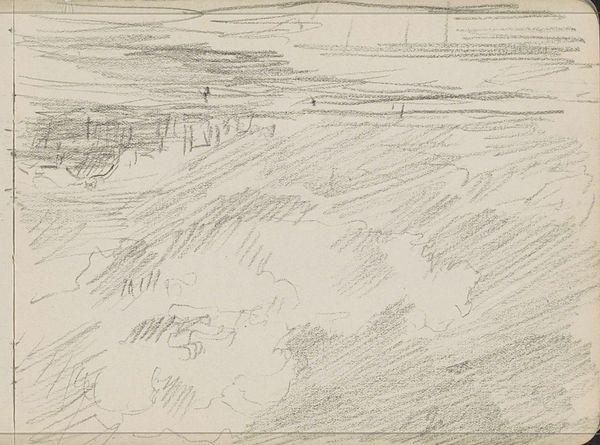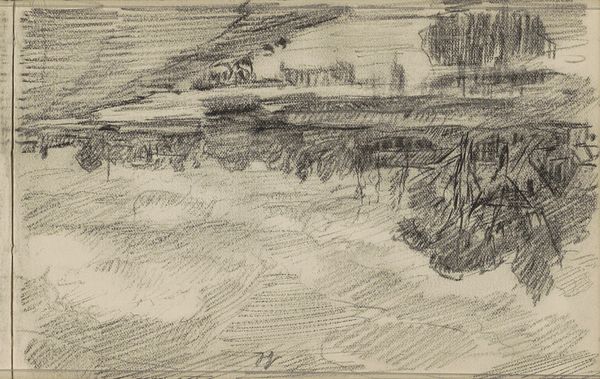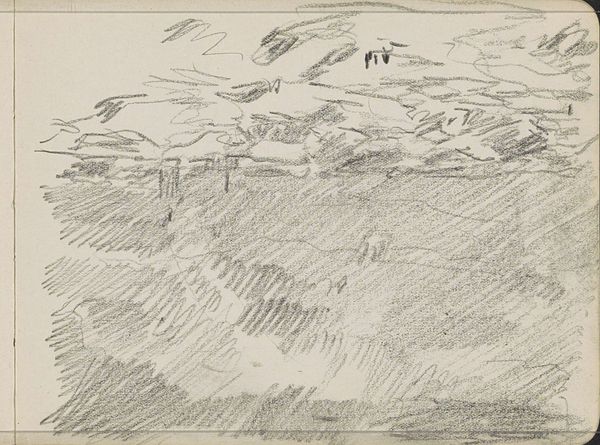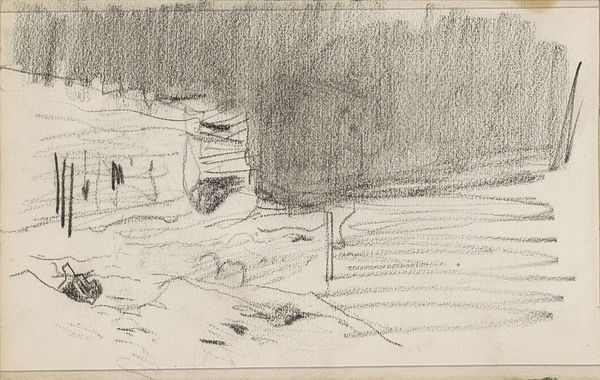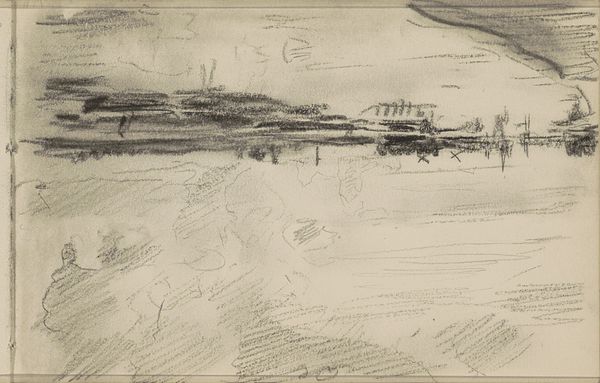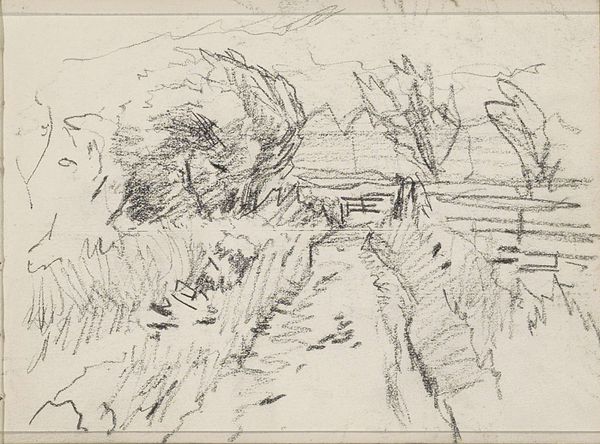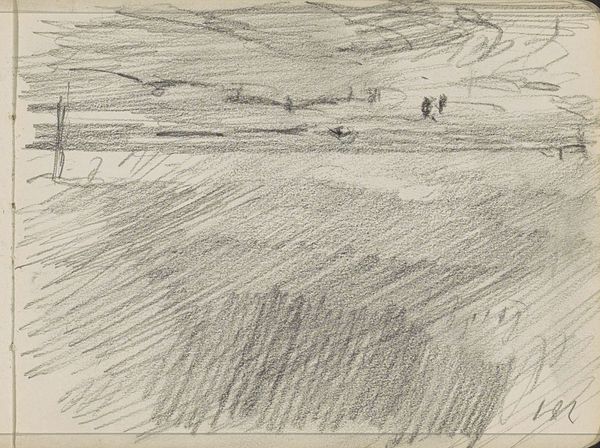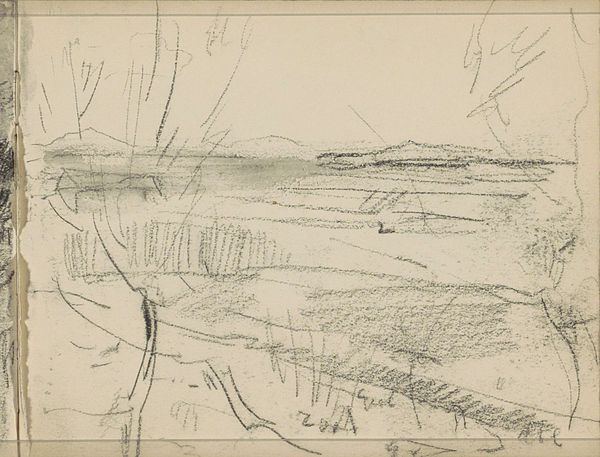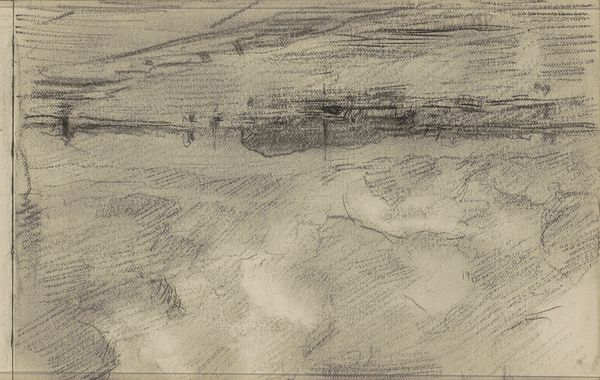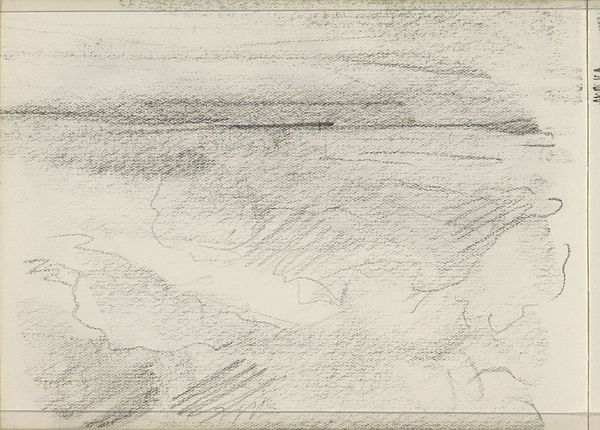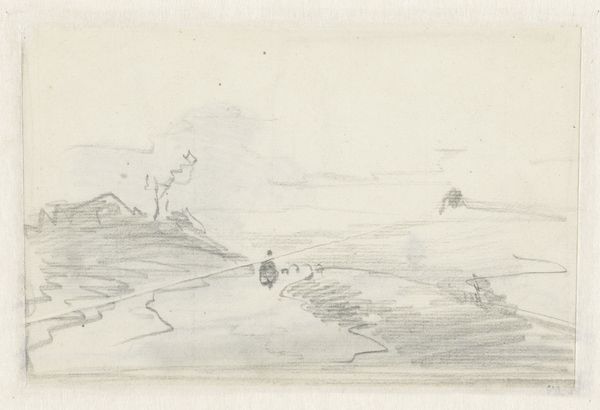
drawing, pencil
#
drawing
#
impressionism
#
landscape
#
pencil
#
line
#
realism
Copyright: Rijks Museum: Open Domain
Curator: Before us we have Anton Mauve’s “Landschap,” a landscape drawing likely created between 1848 and 1888. Editor: My first impression? Ephemeral. Like a fleeting thought caught in pencil strokes. Curator: Precisely. Look at the layering of lines—the repeated forms suggesting fields and the blurred distinction between ground and sky. This lends to that transient quality you picked up on. Note the simple medium—pencil on paper—was likely chosen for its immediacy. Editor: The line work is frantic in places, especially towards what I take to be the right edge. What might that dense network of lines represent symbolically? Curator: Consider its time frame. Mauve’s career bridges Realism and early Impressionism. Landscape painting, historically, spoke of humanity's relationship with the natural world. These dense clusters may indicate the beginnings of industrial intrusion or an expression of the psychological relationship we have to untamed nature, the feeling that we as humans have little control. Editor: An interesting point, since these turbulent details contrast so sharply with the openness implied by the broad sweeping lines forming what looks to be fields or maybe even a body of water. I see also that there’s very little tonality variation beyond subtle shifts in line weight. It almost feels like an exercise in pure line, unburdened by details. Curator: Or rather, liberated by them. The suggestive nature of these quickly sketched details leaves more to the imagination of the viewer. We bring our own experiences and memory to completing the scene. It allows each viewer to personally invest in the landscape. Editor: True, the sketch-like quality allows us to feel involved, rather than simply observing a finished product. After looking more closely at "Landschap," it strikes me as a refreshing antidote to overly polished art. It hints at deeper unrest about the nature of "progress," or what should really be prioritized as subject matter. Curator: Absolutely, and understanding Mauve’s landscape through its layered meanings offers insight into both the artistic and cultural memory it carries.
Comments
No comments
Be the first to comment and join the conversation on the ultimate creative platform.

